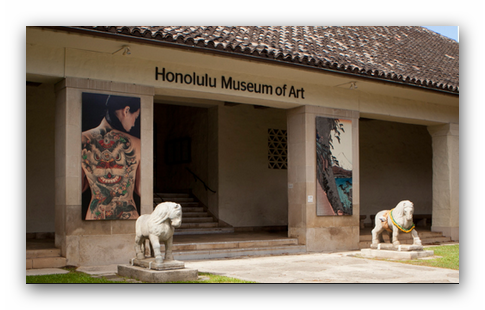Oct 26 2017 - Dec 17 2017
Honolulu, HI
At the beginning of the 17th century, the shogun of Japan demanded that the lord (daimyō) of each province, and his retainers, spend half of every year in the capital of Edo (present-day Tokyo). Traffic along highways such as the Tōkaidō increased, giving birth to Japan’s domestic travel industry: roadside inns, teahouses, and the publication of guidebooks (annai-ki). The popularity of these travel guides steadily increased until the 12-part comical novel Shank’s Mare (Tōkaidōchū Hizakurige, 1802–1822) by Jippensha Ikku (1765–1831) met with explosive commercial success. Artists responded to the public’s wanderlust with images of exotic places.
While the stations along the Tōkaidō highway became iconic scenes in the genre of Japanese landscape art—Utagawa Hiroshige (1797–1858) published no fewer than 12 series on the subject—artists quickly dispensed with the details of Jippensha’s narrative, particularly any references to the protagonists Yajirobei (Yaji) and Kitahachi (Kita). This early series of prints by Katsushika Hokusai (1760–1849), published shortly after the first volume of Shank’s Mare, presents the landscapes in a manner faithful to the original story, including Jippensha’s characters and indicating in the title the distance to Yaji and Kita's next destination.
Also on view are volumes of the book Pictures of Famous Places along the Tōkaidō, illustrated by Kitao Masayoshi / Kuwagata Keisai (1764–1824) and Takehara Shunsensai (act. c. 1807), which likely had a strong literary influence on Shank’s Mare.
Credit: Exhibition overview from museum website
Exhibition Venues & Dates
Oct 26 2017 - Dec 17 2017
Honolulu, HI
